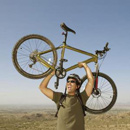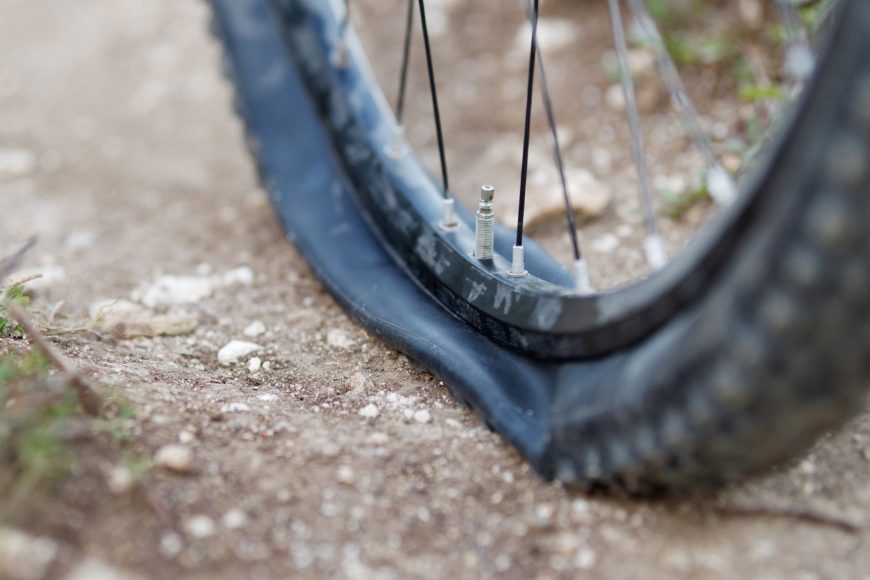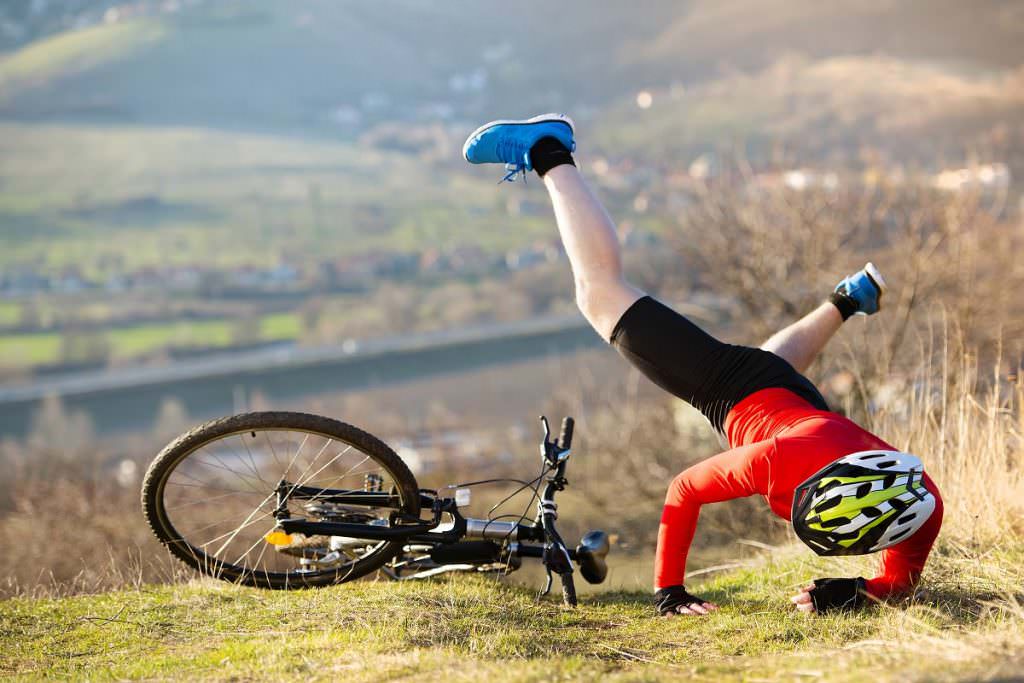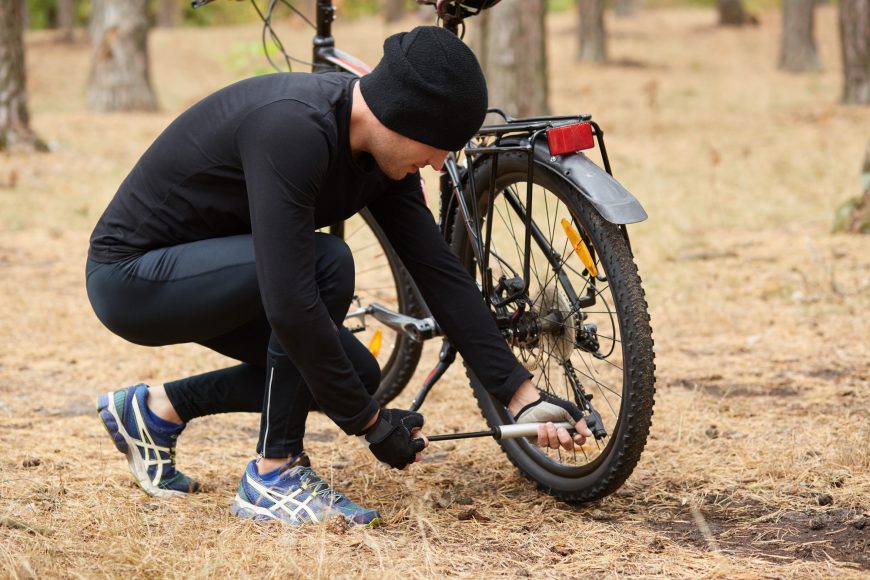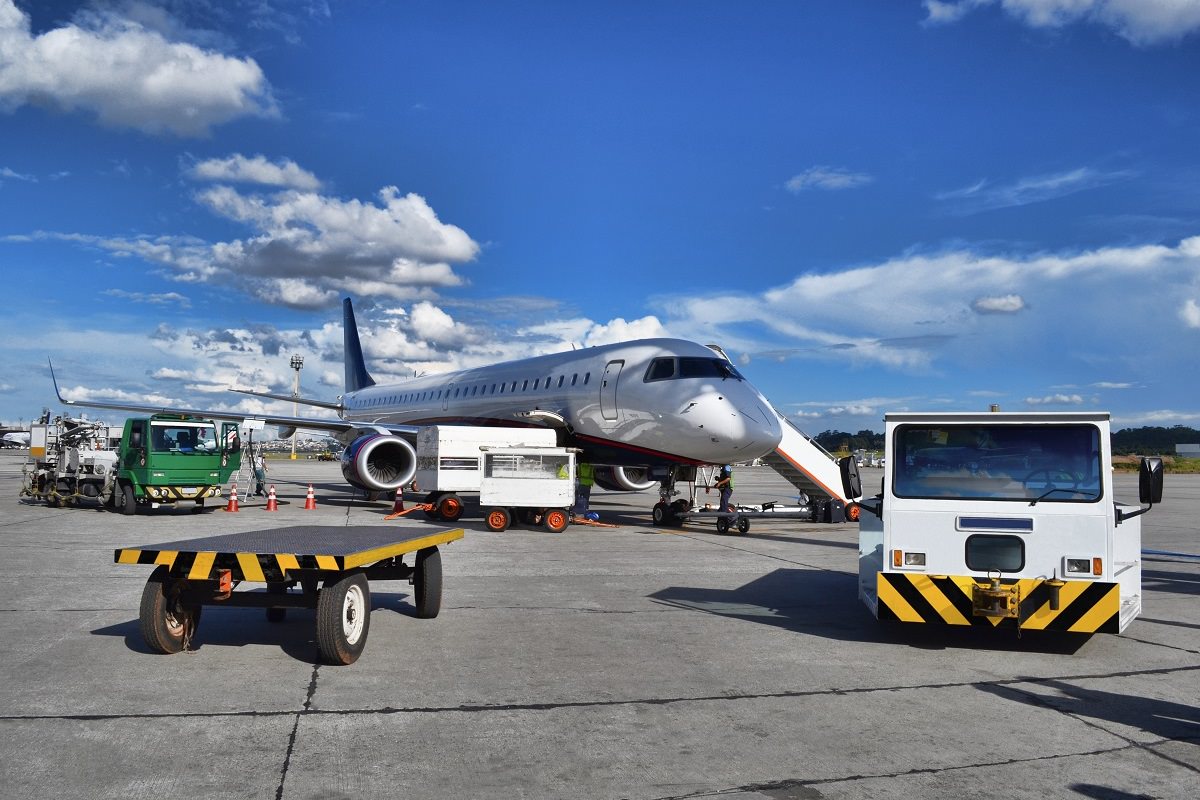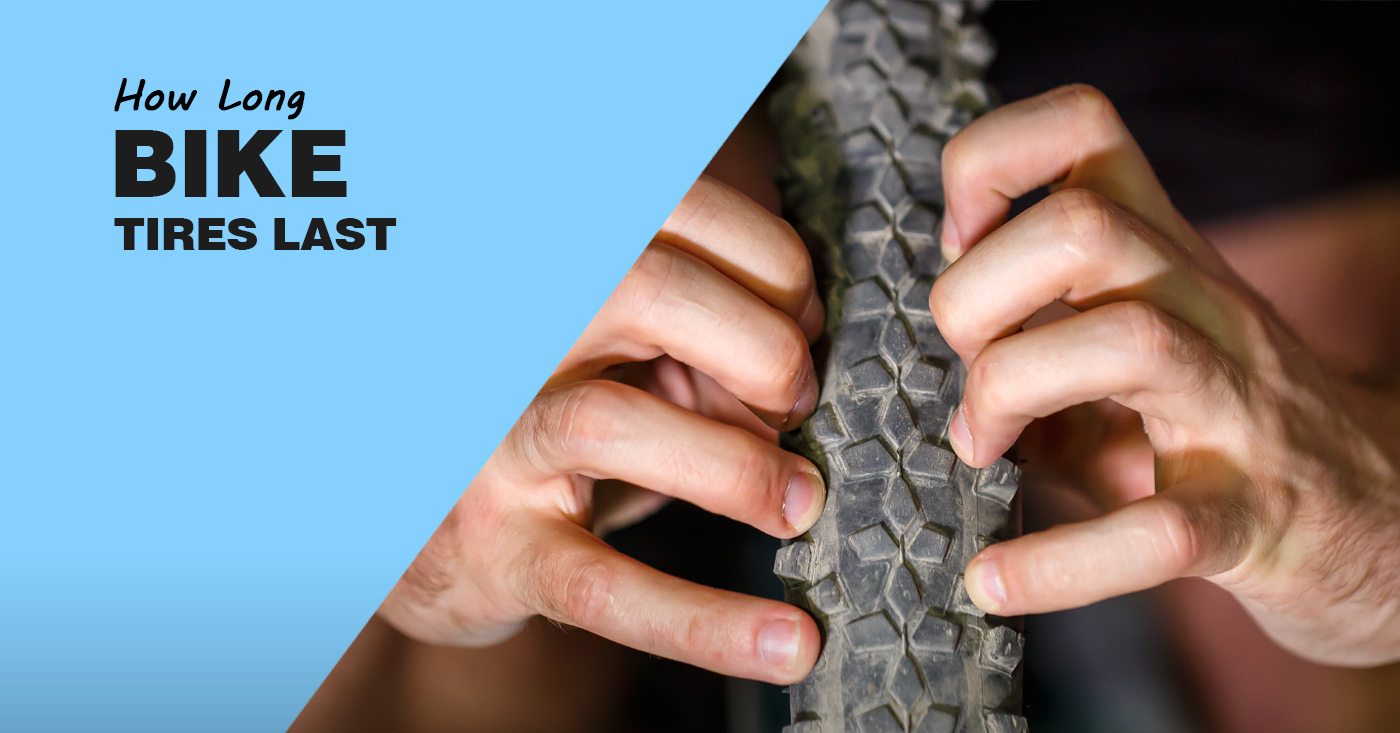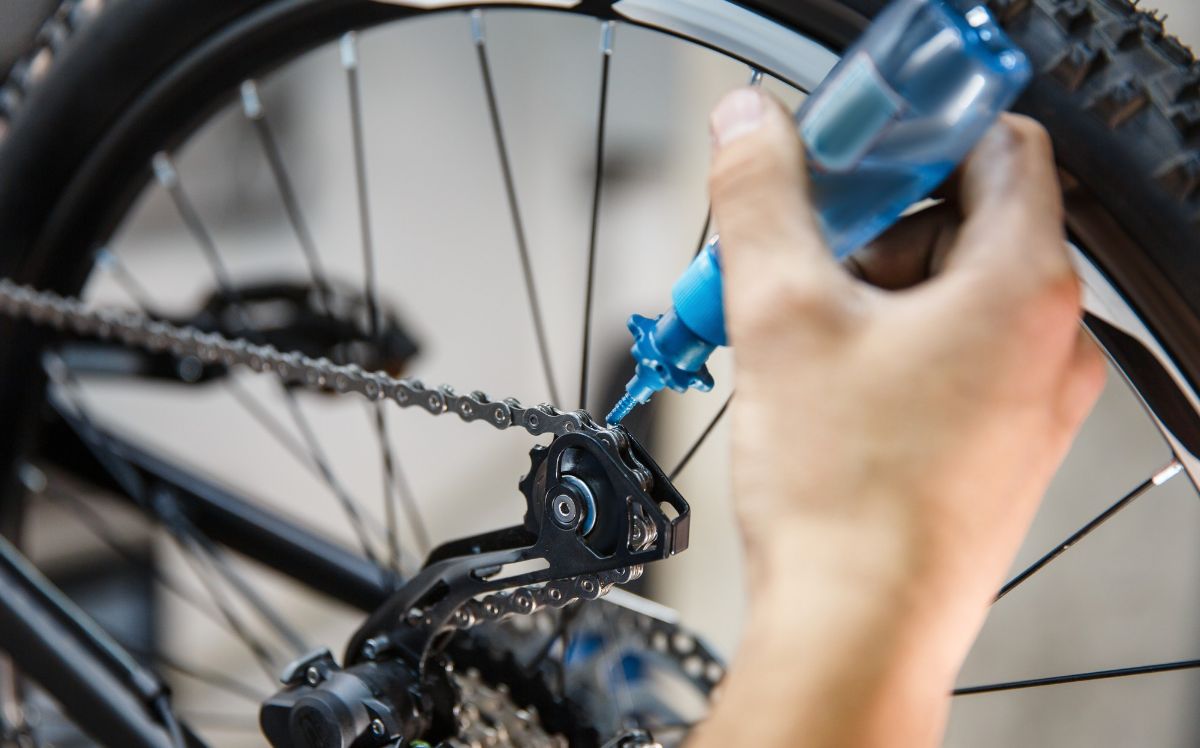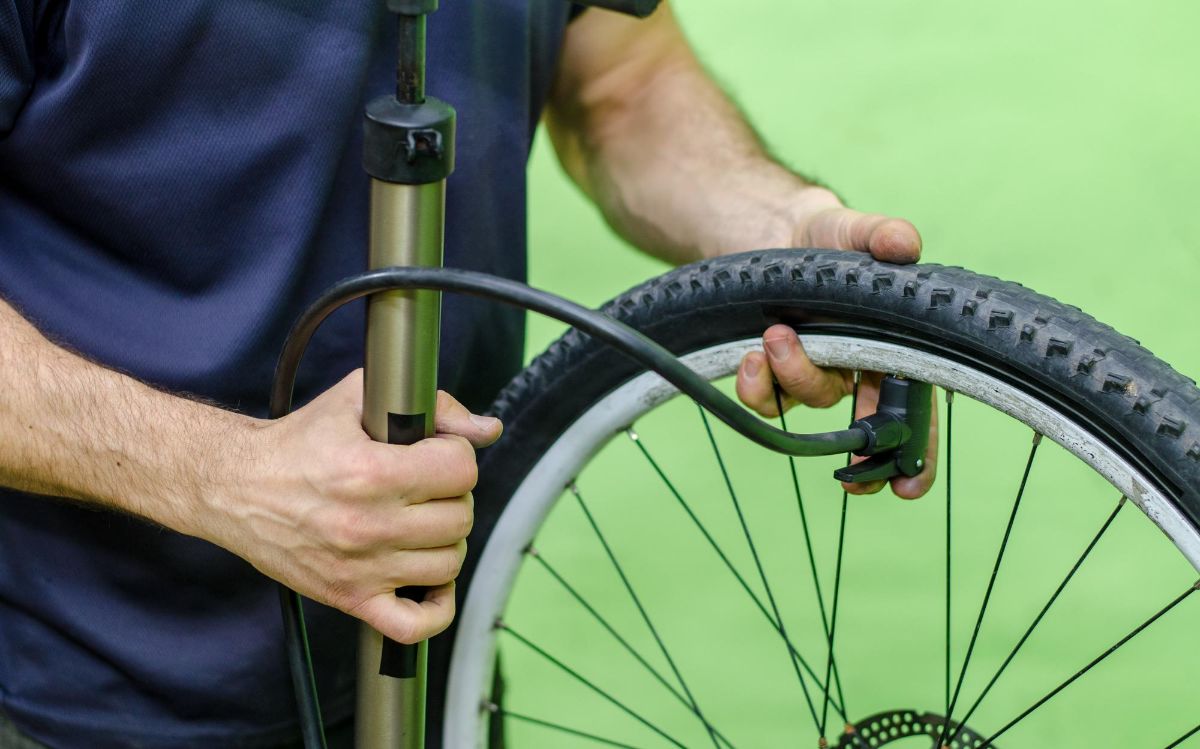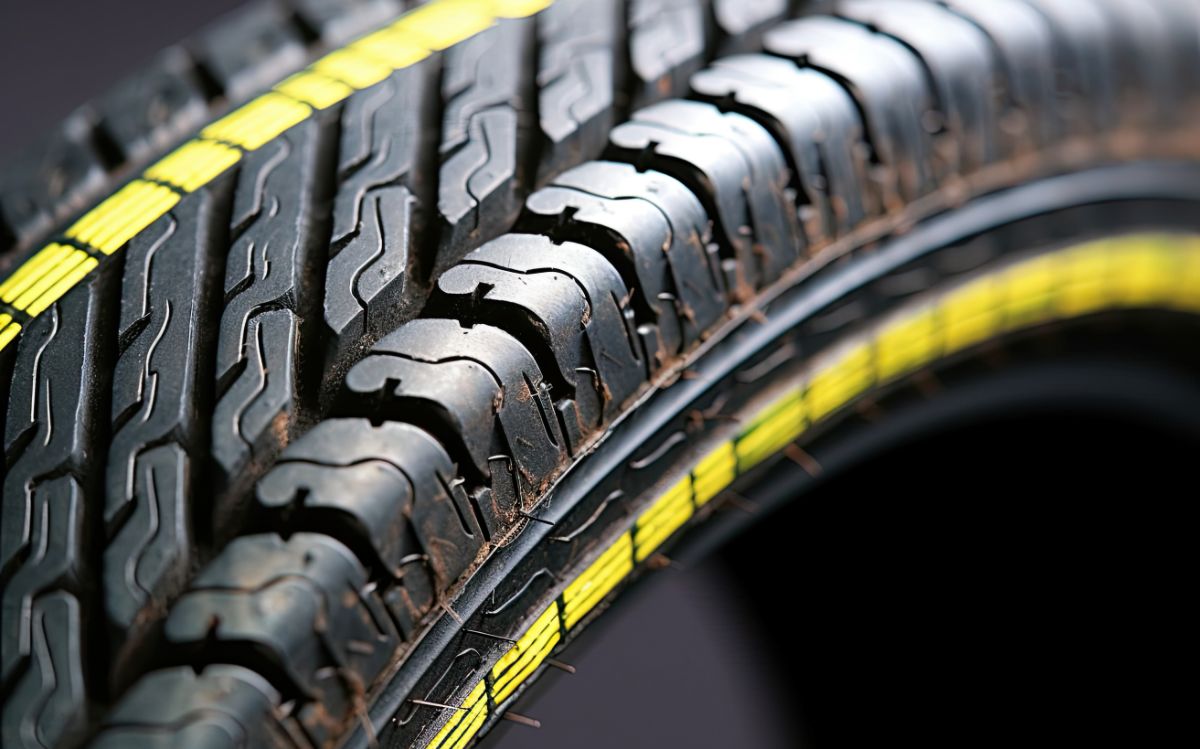Doesn’t it feel amazing to cruise on your bike, going against the wind, and just enjoying the day? The only thing I dread on such a day is hearing a Thump! There you have it, A Flat Tire! It’s just like having a rainstorm on your picnic.
You wouldn’t be surprised to know that according to statistics, it is normal to have at least one flat per season. Of course, the chances increase with the increasing number of miles that you ride. With flats being so common, it is natural to wonder if you can ride with a flat tire. The simple answer is Yes, You Can Ride A Bike With A Flat Tire but I recommend Against It because of the Potential Risks that it carries.
Riding a bike with a flat tire is Difficult and it can damage your Rim. There are more consequences of riding on a flat tire. Let’s discuss them in detail.
Why Shouldn’t You Ride With A Flat Tire
I have already told you that you can try and ride off into the sunset with a flat tire, but wait! you should know about the consequences:
1. It Can Damage The Rim
Since the rim is directly in contact with the ground while you are riding, the most damage can be caused to it if you ride with a flat tire. There will be more impact on it since the tire isn’t providing the required cushioning now.
This damage can be really expensive to repair and even more expensive if you have to get a replacement as compared to fixing a puncture.
2. You’ll Face Difficulty In Handling Your Bicycle
It is very difficult to steer with a flat tire because the loss of required air pressure affects your handling as well. It can be dangerous especially if you are off-road riding.
3 A Flat Tire Will Be More Prone To More Punctures
A flat tire is more vulnerable or you can say prone to more punctures. Since it already lacks the required PSI, the inner tube is exposed to the debris on the road. This can lead to additional punctures.
4. Pedaling Will Require More Force
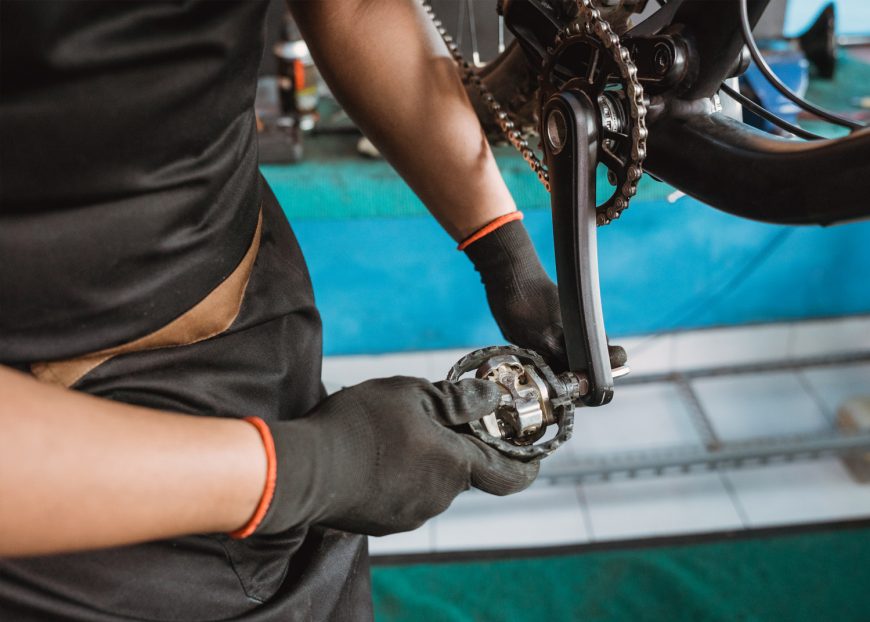
Pedaling becomes hard. You have to exert twice as much force as you normally would because you are pushing the bike. I once had to ride back from my gym and I did not check my tire pressure. I usually do so before every ride.
Anyway, I started riding and it was so difficult. I thought either something was wrong with the gears or I had used all my power in the gym. Still, it wouldn’t be too hard to push a bike on a flat road for a habitual rider. Until my mind clicked.
I got off my bike and checked my tire and it was straight out flat. Nonetheless, I decided to walk the rest of the way because it was just too difficult to pedal. Learn how to check your tire pressure so you don’t have to go through this.
5. It Can Cause Damage To The Inner Tube
The tire as well as the tube can be damaged if you continue to ride on a flat wheel. That’s one of the reasons why I decided not to ride my bike with a flat tire. The inner tube is highly impacted by doing so and it can result in unrepairable damage. You tire and burst or lose the capacity to be fixed. So it’s better not to ride on a flat tire. Upgrade your ride by choosing the best bike tubes for your needs.
6. The Risk Of Having An Accident Will Increase
As we have already discussed, riding on a flat tire affects the handling and makes it difficult to control the bike. This exposes a great risk of accident. If you are riding on a difficult/ technical terrain, on a high speed, reduced stability and handling can be very dangerous. Access real-time traffic accident statistics to ride safely and be aware of road conditions.
7. You Will Feel Over-Tired
Since you will be required to exert more power to get the bike moving, your muscles can get strained. You’ll be tired more than usual which can lead to a negative association with cycling, especially when you are just starting.
Get to know the 5 different types of bikes you should be aware of to enhance your cycling experience.
8. It Is Possible That Your Tire Might Deattach
You can work out a constant speed at which you are comfortable riding your punctured tire. You would be comfortable at the speed but there is a risk of tire de-attachment. Flat tires have a higher risk of detachment especially if you continue to ride on them.
This is a sort of payback. Imagine your tire saying “See ya” before you fall off the bike. Not very appealing is it?
Watch: What Happens When You Ride On A Flat Tire
Traveling On A Flat Tire- How Far Can You Go?
Some variables will decide how far you can travel on a flat tire:
| Factors | Impact on Distance You Can Go |
|---|---|
| Tire Situation | Slow leak: Can go a moderate distance cautiously. Sudden blowout: Limited to a short distance. |
| Weather Conditions | Bad weather reduces stability; flat tire compounds risk. Harsh conditions like snow or rain further limit travel. |
| Bike Type | Different bikes have varying capabilities and limitations. Understanding your bike type helps make informed decisions. |
| Bike’s Weight | The weight of the bike and cargo affects distance coverage. More weight makes it challenging to cover greater distances. |
| Speed | High speed accelerates damage; slow and steady is advisable. Speed with a flat tire is not recommended for long distances. |
While you are at it, consult this bike tire size chart to make sure that you have the perfect fit for your bike.
Flat Tire Riding Alternatives
Now for some good news: there are some smart alternatives to riding your bike with a flat tire.
1. Take Help From Cyclist Rescue Squads
Yes, they exist! Cycling rescue squads can be the real heroes and save you from all the trouble.
2. You Can Carry A Spare Kit
You can carry a kit with a spare tube if you are going for a long ride. It can be handy if you face a flat tire where calling for help is not an option. You can fix the puncture yourself and get riding until you have reached a safe space to call for help.
3. Try To Find A Bike-Sharing Stations

If you are in a city and face this situation, you can head to the bike-sharing station. You can swap your bike and come back with the necessities to fix yours.
7. Or You Can Walk Maybe?
Or you can just walk! It may not be as thrilling as being on the wheels but it is the safer option. Plus, you will be able to achieve your steps goal for the day. It’s a win-win situation.
8. Ask For Help
If none of the above is the option for you, call a friend or family to help you out. There is no shame in hitching a ride if it saves your bike from damage.
5 Tips To Avoid A Flat Tire
You can avoid the buzzkill of a flat tire by keeping in mind a few of my tips. You can practice them if you don’t want to be stuck on the roadside:
1. Maintain The Tire Pressure
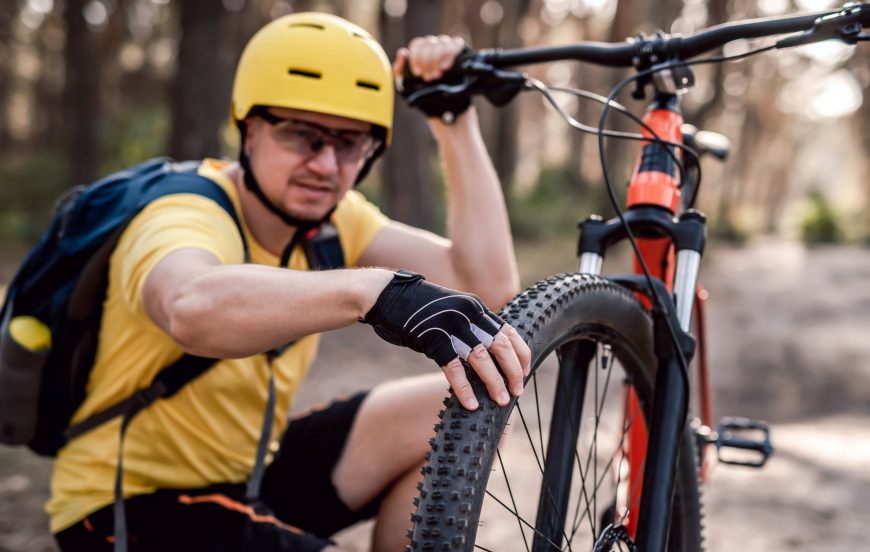
It only takes 5 minutes to check the tire pressure before you head out for the day. Maintain the recommended PSI for your bike type to avoid any kinds of punctures. Remember that tire pressure can also fluctuate due to weather conditions.
Cold air can cause a pressure drop, meanwhile, hot weather can lead to expansion. Discover the ideal tire pressure for your road bike with our guide on road bike tire pressure. Also, Use our MTB tire pressure calculator for the best off-road biking experience.
2. Check For Visible Damage Before Any Ride
Inspect your tire for any visible damage which can lead to a puncture. Look for cuts or debris that can be harmful. You can avoid a full-blown outtire by catching onto the problem timely and dealing with it.
3. Try To Maintain Your Bike
Regularly cleaning your bike can help remove any harmful particles that may be sticking to your tire. Use sealants and tire liners to provide your tire with an extra layer of cushioning.
Small holes can lead to loss of air pressure. You can seal these holes using a good quality sealant.
Keep your bike in top shape by following our comprehensive guide on how to tune up your bike. Also, Learn essential maintenance tasks with our guide on basic bike maintenance.
4. Inspect Your Rim Tape
The rim tape covers the spoke holes. With time, it can be worn off and cause your spokes to stick out. If your tape is worn out, replace it to prevent any punctures.
5. Be Mindful While Riding
Riding responsibly can significantly reduce the risk of damage. If you are gently maneuvering your bike rather than hopping on curbs can save your tires from extra stress. Moreover, avoid riding over debris or materials that you know can damage your tire.
FAQs
Is it ok to cycle with a flat tire?
No, it is not okay to cycle with a flat tire because it can damage your bike as well as pose a threat to your safety.
What is the difference between a flat tyre and a puncture?
In a flat tire, you will lose all the air or at least most of it. A puncture will lead to a slow leak of air.
Can I drive 1 mile on a flat tire?
No, it is not safe to ride for a mile on a flat tire.
What PSI is a flat tire?
Below 20 PSI will be considered a flat tire.
Conclusion
Yes, yes, I know it feels like a wild adventure to ride on a flat tire but it is not worth the risk involved. The consequence can be as little as a bumpy ride or as huge as bike damage. That is why even though you Can ride a bike with a flat tire, you still should Avoid it.
It is always better to ride safely on the road rather than letting minor hiccups get out of hand. Have you faced this season’s flat tire yet? How was your experience? Let me know in the comment section below!
Also Read
- Why Do Bike Tires Keep Losing Air? Everything You Need To Know About Pressure Loss
- How Long Do Bike Tires Last
Should you have any questions or require further clarification on the topic, please feel free to connect with our expert author Luke Ameen by leaving a comment below. We value your engagement and are here to assist you.

